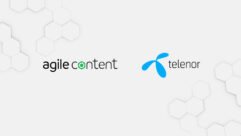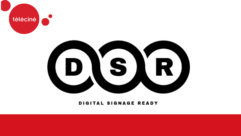
Educational Publishers Push for Digital Content
Nov 5, 2008 12:00 PM,
By Linda Seid Frembes

Follett Digital Resources Lycea
The quick adoption of classroom AV such as projectors, document cameras, and interactive whiteboards has spurred the creation and dissemination of digital content for the education market. In addition to educators creating their own original content, textbook publishers such as Pearson, McGraw-Hill, and Houghton Mifflin offer supplemental content and alternatice formats such as e-books and online resource centers. Specifically, publisher McGraw-Hill offers 95 percent of its print textbooks as e-books.
“The state of content in K-12 is all over the place. Some publishers are still print-based, while mega-publishers offer integrated products—both print and digital textbooks,” says Randy Merriman, director of business development for Follett Digital Resources. “Publishers are using online resources to offer management and usability in one place.” Follett Digital Resources is a division of the Follett Corporation that provides publishing solutions to K-12 educational publishers—including an e-learning platform, e-book solutions, and development services for e-learning products and systems. According to Merriman, publishers in the K-12 space must think about making its content portable as means of succeeding in the 21st-century education marketplace.
The company’s flagship product, called Lycea, provides educational publishers with the ability to create, manage, and deliver digital content. Follett Digital Resources also helps its clients develop processes and strategies to support custom publication and technology-based delivery to multiple platforms and devices. “Lycea offers prebuilt tools and functionality for publishers to create and manage content, as well as tools like built-in rights management and prebuilt communication tools for chat and collaboration,” Merriman says.
The company serves both K-12 as well as higher education, but most of its concentration is K-12 since Lycea tools and functionality were developed specifically for that market. “A lot of e-learning in K-12 tends to be much more comprehensive and touch all parts of the teaching/learning spectrum,” says Merriman, who also notes that electronic products assist with student reporting and assessment, tolls that are especially important under the No Child Left Behind Act.
“You can track student performance and customize instruction for personalized learning,” Merriman says. Other benefits include grade-appropriate readers, English-as-a-second-language material, and the ability of publishers to have content in a platform that can be customized for a specific state or school district.
1
Educational Publishers Push for Digital Content
Nov 5, 2008 12:00 PM,
By Linda Seid Frembes
Merriman says the ability to effectively reuse content via technology is a major paradigm shift for the education industry. “A high level portability means a wider variety of products such as e-books, online content, and online assessment tools,” he says.
By most accounts, the digital content push is well underway. According to Follett Digital Resources, the company’s eBooks distribution solution allows its clients to reach more than 60,000 users. The eBook solution is touted as providing the right infrastructure, digital rights management and integration, the right business model, and support for that business model. The company’s approach is that, although distributing e-books is not the same as distributing regular books, it should be as easy as distributing a traditional book.
This, of course, puts pressure on publishers for easy-to-use content, as well as on the AV community to design classroom systems that greatly enhance the available content. According to Merriman, AV integrators may have to come up with new equipment and products to sell that can deliver the new portable and reusable content. He says that publishers will continue to become more audio and video savvy with their content, but it all has to tie back to instruction.
The end user may interface with the digital content across various platforms such as podcasts, videos, slide presentations, or animations and graphics. “Publishers are sensitive to the amount of classroom time that is needed to deploy digital content,” Merriman says. “The adoption of content depends on the installed base of technology to become ubiquitous.”
Certain studies suggest that e-books are still a small percentage of overall textbooks sales, but the numbers are rising. The shift to digital means less print plate and binding costs for the publisher, which is attractive cost cutting given the challenging business climate.
Follett Digital Resources has seen growth for its eBook solution in the library market since it cuts down on the problem of replacing a physical inventory. The company also recently announced the addition of four publishers to eBook distribution agreements, bringing a total of 46,900 K-12 and public library titles available through its commerce sites Titlewave and Titletales.
2










